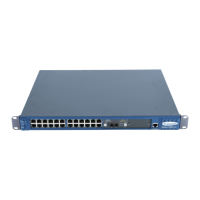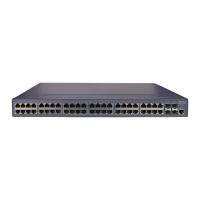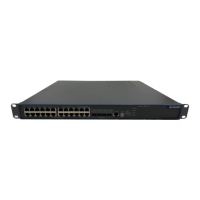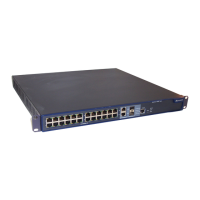Operation Manual – Routing Protocol
Quidway S3900 Series Ethernet Switches-Release 1510 Chapter 4 OSPF Configuration
Huawei Technologies Proprietary
4-27
Operation Command Description
Display OSPF routing table
display ospf
[ process-id ] routing
Display OSPF virtual links
display ospf
[ process-id ] vlink
Display OSPF request list
display ospf
[ process-id ]
request-queue
Display OSPF
retransmission list
display ospf
[ process-id ]
retrans-queue
Display the information
about OSPF ABR and ASBR
display ospf
[ process-id ] abr-asbr
Display OSPF interface
information
display ospf
[ process-id ] interface
interface-type
interface-number
Display OSPF errors
display ospf
[ process-id ] error
Display OSPF ASBR
summary information
display ospf
[ process-id ]
asbr-summary
[ ip-address mask ]
Reset one or all OSPF
processes
reset ospf [ statistics ]
{ all | process-id }
Use the reset command
in user view.
4.9 OSPF Configuration Example
4.9.1 Configuring DR Election Based on OSPF Priority
I. Network requirements
Four S3900 switches, Switch A, Switch B, Switch C, and Switch D, which run OSPF,
are on the same segment, as shown in
Figure 4-3. Perform proper configurations to
make Switch A and Switch C become DR and BDR respectively. Set the priority of
Switch A to 100 (the highest on the network) so that Switch A is elected as the DR. Set
the priority of Switch C to 2 (the second highest priority) so that Switch C is elected as
the BDR. Set the priority of Switch B to 0 so that Switch B cannot be elected as the DR.
No priority is set for Switch D so it has a default priority of 1.

